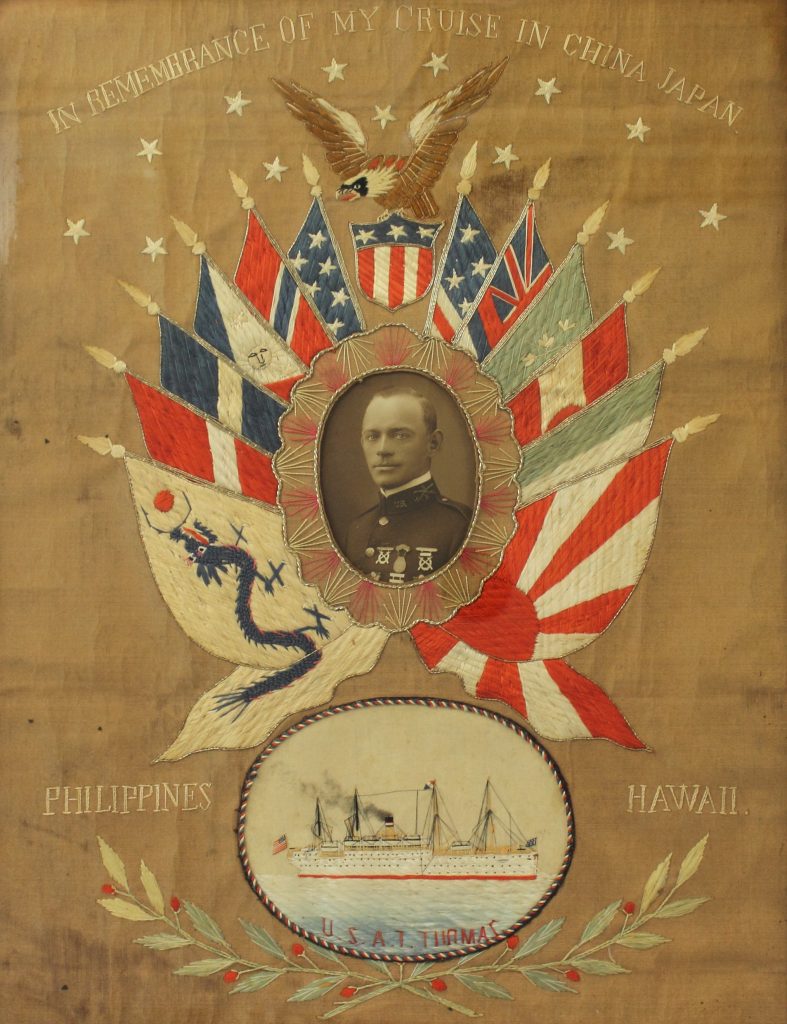This trip “Inside the Collections” features another object on display in our 2021-2022 exhibit, Antiquarian to Accredited: A Look Inside the Historical Society. The embroidery seen below is a “found in collection” object, meaning we do not know how or when it came into our collection. Usually given to the Society at a time when we had limited recordkeeping, found in collection objects are rarely attributed to a creator or owner. This piece was no different.
At first glance, the embroidery reminded me of a woolie. What is a woolie, you ask? Woolie is a common name for a sailor’s woolwork picture, a folk art tradition centered on embroidered images of ships, nautical scenes, and patriotic motifs.

Woolies
Most sources agree that woolies originated with British sailors in the first half of the nineteenth century, and remained popular from about 1840 to World War I. As a folk art form, woolies represent the coming together of three factors: free time, sewing skills, and sentimentality. Facing long hours at sea and in port, sailors likely turned to embroidery as a way to pass the time, keep their hands busy, and differentiate their working and leisure hours, similar to other maritime folk arts such as scrimshaw and knotwork. For as long as sailing ships dominated naval and merchant fleets, sailors were also required to possess rudimentary sewing skills, as one of their duties was to repair and maintain the ship’s sails. Sailors also mended and embellished their own uniforms, requiring them to keep sewing supplies on hand. Lastly, woolies served as mementos of a sailor’s service and travels or as gifts for loved ones upon his return. The number of woolies that survive from this period suggest they were prized possessions. Examples in period frames may even indicate that the sailor or his family made a monetary investment to have the woolie displayed.
Continue reading